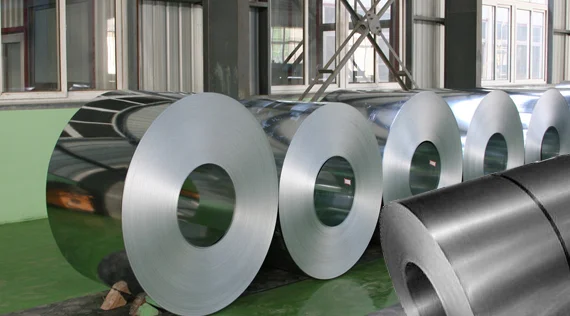Mike Marley’s Shredded Power #82
Steel News | 2017-02-08 20:10:30
Inconsistent supply and demand and varying price changes are the prevailing trends in the ferrous scrap market this month. Along the U.S. East and Southeast Coasts, domestic steelmakers have slashed their prices for shredded scrap by $40 per gross ton, while buyers from India have boosted their offers by $15 per tonne. .
WSEM World Steel Exchange Marketing
Mike Marley’s Shredded Power #82
February’s price moves range from sideways to down $40.
February 8, 2017
Mike Marley (484) 751-5600
Peter F. Marcus (201) 503-0902
Commentary:
At the core of the chaos is weaker demand from Turkish steelmakers and a steep drop in the prices they are paying for imported scrap. A decline in their export sales of rebar is the source of the slowdown. Consequently, prices for the bellwether 80/20 heavy melt slumped to about $220 per tonne delivered to a Turkish port in deals with their European scrap suppliers. U.S. prices dipped to about $240 per tonne for the same grade. That’s better than what the Europeans were getting, but scrap shipments from the U.S. include higher loading and ocean freight costs.
Domestic shredded prices are off from the delivered-to-the-mill average of $305 per ton last month, but are higher than the offshore offers, even on a shipping point basis. Mills in the Middle Atlantic region are paying between $260 and $265 per ton delivered for shredded scrap, while they counterparts in the Southeast are buying at about $240 per ton F.O.B. a railcar or barge from coastal suppliers. Comparable F.O.B. prices to Turkey would be about $210 per tonne.
Later deals on industrial grades were at unchanged prices, according to several industry sources. There were reports that many of the big EAF steelmakers had cancelled their unshipped orders at the end of January, but that was not the case. They canceled the undelivered orders for cut grades like heavy melt and shredded orders, but not the busheling and bundles buys, particularly for their mills in the South.
There are differing explanations for this according to several brokers and dealers. First, January was the third month in a row that prices rose and many dealers assumed it might be the last, so they oversold. As they say, they sold "paper"–i.e. scrap they didn't have and only hoped to get at cheaper prices. This included both obsolete and industrial grades.
Scrap dealers by nature are short sellers. They sell not only what they have on the ground, but what they expect to see coming through the gates that month. When, that scrap doesn’t arrive or they have sold some of it on "quiet deals" to other mills, they end up short material.
At the end of January, brokers were cancelling those unshipped orders with plans to offer $10 or $20 per ton less this month for the same material, but dealers responded by saying they probably won't have much to offer for another week or two. Realizing their mill inventories were low, several mills backpedaled on those cancellations, at least for those involving the industrial grades. Instead, they left the prices at January levels and told dealers that they still wanted the balance of the undelivered industrial scrap from January as well as the tonnage bought this month.
At the same time, some sheet mills from the South eere making springboard buys outside their region. They are bidding up the prices of busheling in Cleveland and Detroit, paying the same prices as last month unlike some of the local mills who cut their offers by $10 per ton. Consequently, they may be taking prime scrap away from the local mills who fail to match their offers. Indeed, one Ohio mill that’s been a late buyer this month, paid $340 per ton for busheling this week, unchanged from last month.
EAF flat-rolled mills have new and added competition for industrial scrap.
Industrial scrap like busheling and bundles has a fixed supply. Steel mills and scrap dealers can't generate more by raising the price as they do with shredded scrap and other obsolete grades. All they can do by raising the price is buy more tons from scrap suppliers to rival mills.
Though many mill buyers and brokers were expecting a price correction this month, the EAF-based sheet mills are still busy. But they now have more competition for industrial scrap from other steelmakers who are seeing a rise in their orders. That includes the special quality bar makers, the oil country tubular goods producers and their newest rival, Big River Steel in Osceola, AR.
Unlike Nucor Corp. and Steel Dynamics Industries, Inc., Big River does not have its owns crap yards, but has been buying busheling throughout the South. Several traders said it has been reaching as far east as Alabama and as far north as Chicago.The region has little or no excess industrial steel scrap, and now has a big new buyer claiming a share of that supply.
And, several major Canadian scrap dealers sold a huge share of their industrial scrap into the U.S. in January because of higher offers from some U.S. flat-rolled mills. This month, however, they pulled back and have not offered much to U.S. mills because of a sharp increase in both the price and demand at one large Canadian steel mill.
Lasty, dealer resistance to lower price offers has increased this week as they realized that some mills were seeking additional supplies to offset the shortfalls from last month’s purchases. Along with the growing chorus of dealers looking for better offers, some may be holding back some tons from the market this month, hoping that colder winter-like weather will arrive in the thus far balmy Midwest, and bolster concerns about potential shortages because of transport problems or reduced output at some scrap yards.
Railcar shortages were an issue for many of the Eastern yards last month because the exporters were booking them from the railroads to deliver the shredded scrap they had sold to inland mills. That’ now a growing problem in the Midwest, said a Chicago-based broker, possibly because the mills in the South are using more railroad-owned gondola cars (gons) as well as their own. When February, already a short month, ends, some mills may still be awaiting scrap shipments, but not because dealers have oversold again.
Shredded Scrap Thermometer: Export sets the pace.
Even easier access to the domestic mills doesn’t save some coastal shredders from the oversupply problems that serve as the “wild cards” in their market outlook each month. These are:
The Nasdaq Futures Exchange (NFX) expects to start trading in the Midwest US shredded scrap index futures early in 2017. The contract will trade in 20-gross ton units with the prices settled on the 11th day of each month against the TSI Midwest US Shredded Scrap Index published by Platts. For additional information about shredded futures trading, contact John Conheeney at WSEM. His phone number is 201-503-0922 and his email is jconheeney@wsemgroup.com.
Note: Each issue, Mike Marley gives his opinion on the one-month steel scrap price outlook. He explains the key reasons for his view and highlights the “wild cards” that might cause him to be wrong.
This report includes “forward-looking” statements that are based on current expectations about future events and are subject to uncertainties and factors relating to operations and the business environment, all of which are difficult to predict. Although we believe that the expectations reflected in our forward-looking statements are reasonable, they can be affected by inaccurate assumptions we might make or by known or unknown risks and uncertainties, including among other things, changes in prices, shifts in demand, variations in supply, international currency movements, technological developments, governmental actions and/or other factors. The information contained in this report is based upon or derived from sources that are believed to be reliable; however, no representation is made that such information is accurate or complete in all material respects, and reliance upon such information as the basis for taking any action is neither authorized nor warranted. WSD does not solicit, and avoids receiving, non-public material information from its clients and contacts in the course of its business. The information that we publish in our reports and communicate to our clients is not based on material non-public information.
The officers, directors, employees or stockholders of World Steel Dynamics Inc. do not directly or indirectly hold securities of, or that are related to, one or more of the companies that are referred to herein. World Steel Dynamics Inc. may act as a consultant to one or more of the companies mentioned in this report.
Copyright © 2016 by World Steel Dynamics Inc. all rights reserved.
 By
By 